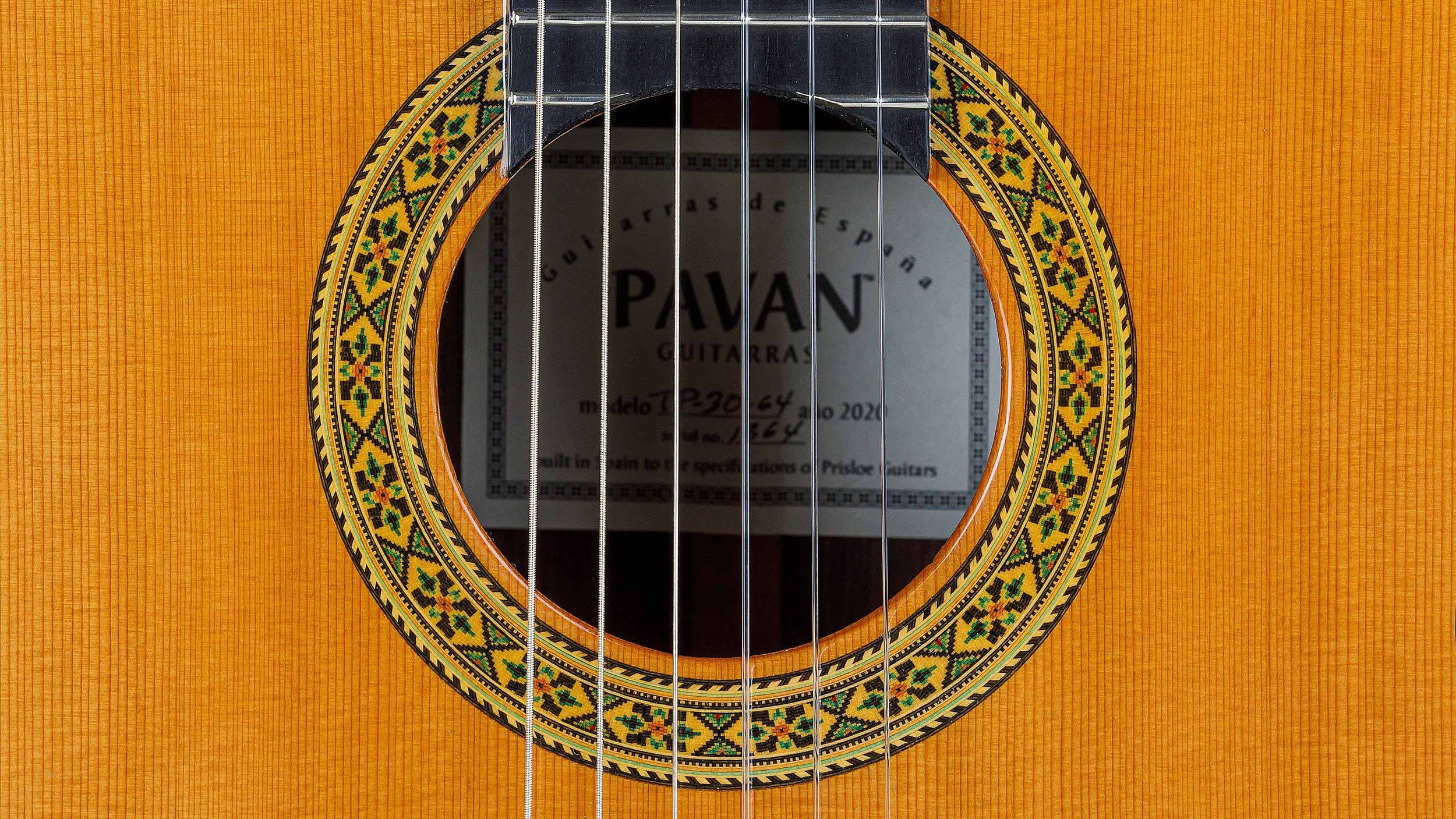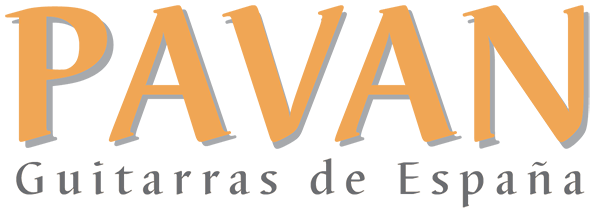
FREQUENTLY ASKED QUESTIONS
Questions? We have Answers.
Here are some of the most asked questions. If you can not find an answer to your question please call or email. We love to talk "guitar".
-
Spruce has a firm clear sound with a lot of tonal variation in the hands of an experienced player. Spruce spikes the octave overtone above the fundamental note you play. This gives firmness and clarity to a well-designed instrument.
Cedar, like spruce, gives a strong fundamental. Cedar brings out various higher-frequency overtones and partials. This gives cedar a sparkling quality over a warm fundamental. Both are excellent tonewoods and neither is superior to the other for classical guitar construction.
See the Tips page to watch a video comparison of a Pavan Cedar and Spruce Spanish guitar.
-
A nylon string classical guitar only takes about one-half the string tension to bring the strings up to pitch as compared to an acoustic steel string guitar. Nylon strings move more when plucked. Nylon strings need to be higher off the fretboard to prevent string buzz on the frets. With a slightly higher playing action, we need more space between the strings so the fingers don’t have to come down perfectly perpendicular to the strings all the time so as not to deaden the adjacent strings. More space between the strings makes the guitar easier to play.
-
The guitars have a two-part conversion lacquer finish designed specifically for guitars and various other stringed instruments. The finish offers both flexibility for musical responsiveness and durability. The soundboards are lightly finished.
-
Pavan guitars are only available through the Pavan Guitars website or by setting an appointment to come try out the guitars. We are located in the Ithaca, NY area in the beautiful Finger Lakes region.
Dealing with customers directly lets us keep prices down and give excellent customer service.
-
Both the TP-20 and TP-30 models use the same high-quality materials. The differences are in the soundboard bracing pattern and thickness graduations. The TP-20 has an angled harmonic bar below the sound hole which drops toward the treble side of the bridge. This offers a smooth, open, well-balanced sound with good sustain.The TP-30 soundboard bracing pattern has a harmonic bar below the sound hole that goes straight across the top. A treble bar is then added to increase treble and higher frequency response. The TP-30 is a bit thicker in the bridge area and thins out more toward the edges. This offers a firm, well-defined sound with clarity power and excellent tonal variation.
-
I prefer medium/normal tension strings. There are a good number of excellent brands. D’Addario Pro Arte EJ45 is a good all-around string and is a good starting point. Get used to them and then experiment with other brands to find what strings suit you and your guitar.I also like Savarez 500CR New Cristal/Corum Normal Tension strings.
-
Laminated is basically plywood. Laminated sides and backs on Classical guitars are usually made up of three wood veneers. The outer two veneers are very thin and matched to appear as a solid wood back or sides. The inner veneer runs horizontally across the grain of the outer veneers. This creates stability and keeps costs down. However laminated backs on classical guitars are less tonally responsive because they are not as easily activated to respond to the sound vibration emanating from the soundboard and activating the air inside of the guitar.
A solid wood back of the proper thickness and density will vibrate in response to the harmonic frequencies emanating from the soundboard. The overtones and partials now emanating from the back also activate the air inside of the guitar which also activates the soundboard creating more tonal variation.
A solid wood back will give more tonal variation than a laminated back.
-
Pavan guitars are shipped with a seven-day trial period from the time you receive the guitar. If the guitar is not what you were looking for simply give us a call. You can then ship the guitar back in the condition it was received and you will be given a complete refund.
-
I personally set up every guitar myself. Each fret is checked to see that it is level and properly crowned. The frets are then polished and buffed with 0000 steel wool. The bone nut slots are filed to the proper depth so that the strings are super close to the first fret. The bone saddle is removed and lightly sanded and steel wooled to be smooth and have a good break angle for the strings. The saddle is then slipped back into the saddle slot and the string height is measured and shaped to get the proper string height. The string height from the bottom of the first string to the top of the 12th fret is usually set at 7/64”, more easily seen on the rule as three and one-half 32nd”. The height of the 6th string from the bottom of the string to the top of the 12th fret is usually set just shy of 4/32”.
-
Pavan guitars are built at 50% relative humidity. Humidity levels between 40% and 75% are pretty good but 45% to 65% would be even better.
-
Yes. String length, nut widths, fret markers, wood types, etc are common customizable features. Please give me a call to discuss what you are interested in.
“Pavan – the guitar world’s best kept secret!”
More Questions?
If you have questions about Pavan Spanish classical guitars or if you would like to personally place an order you can call me directly at (607) 387-3875 any day of the week up until 10 pm EST, or send an email to tom@pavanguitars.com.
